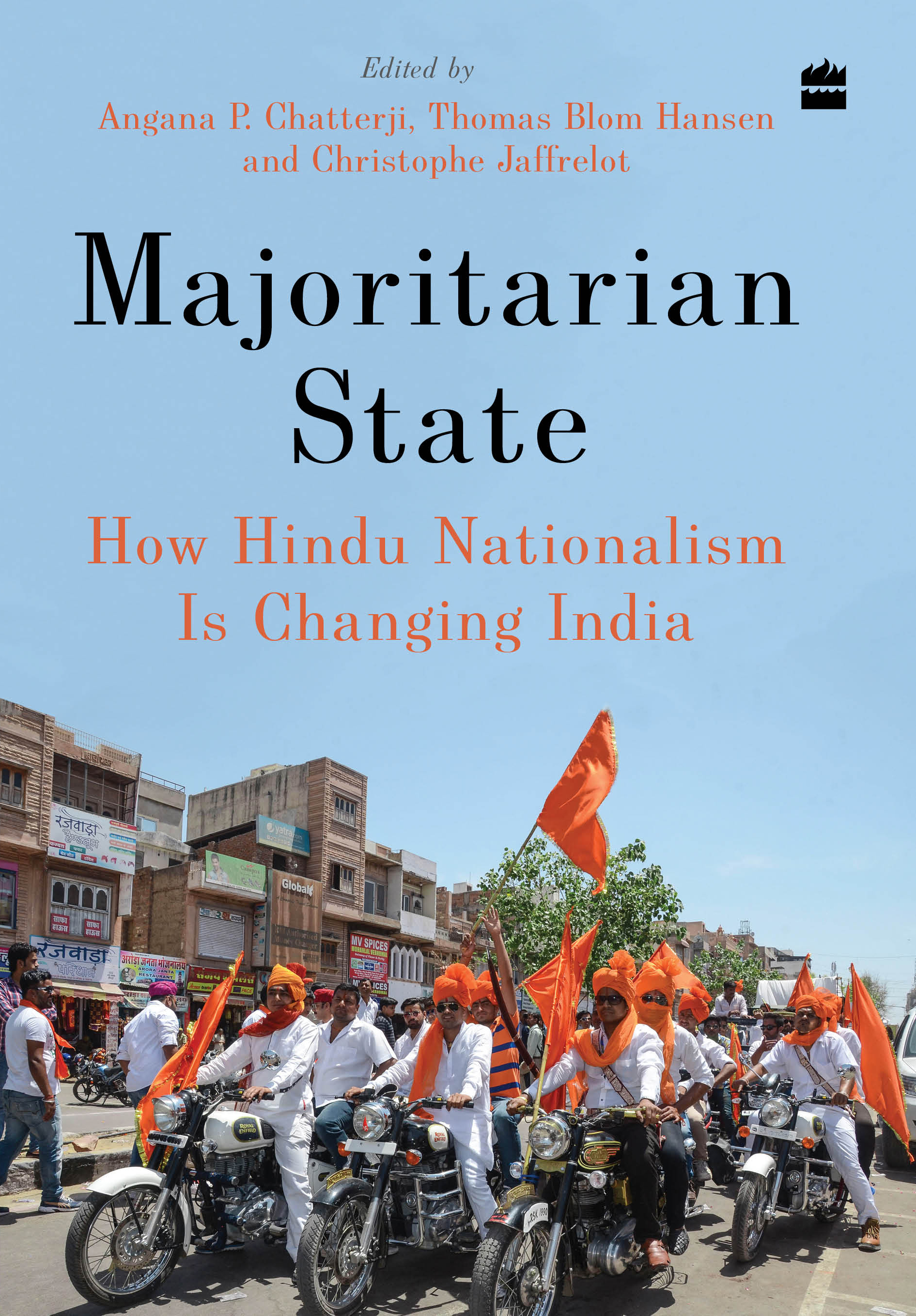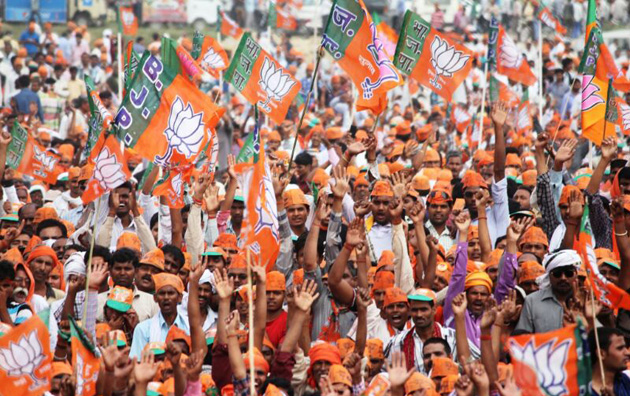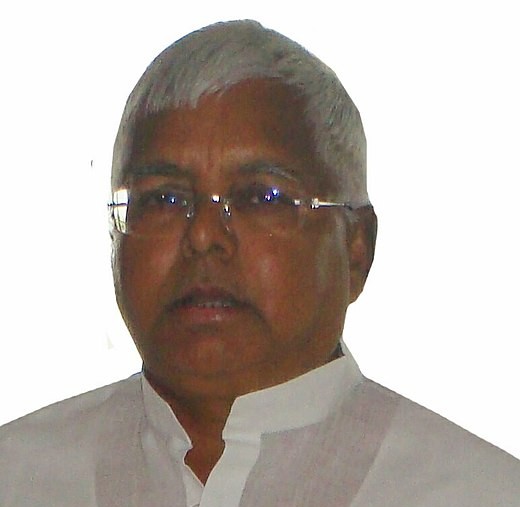Over the past five years, India has moved further away from the multicultural model set forth in its secular constitution. While its prescriptions have never been followed to the letter, as seen in the underrepresentation of minorities—Muslims in particular—in the administration, the police and the military, as of 2014, Muslims also began to vanish from elected assemblies, where this minority is hardly represented anymore.
Not only are Muslims marginalised in major institutions and the public sphere, but they are targeted by Hindu nationalist militias as well. These groups are trying to rid the public space of this minority by (re)converting its members to the dominant religion, preventing them from praying in the open and prohibiting them from acquiring real estate in mixed residential areas. They are also trying to cut the majority community off from the Muslim minority by preventing interfaith marriages. Over and beyond this, the vigilantes attack Muslims, accusing them of eating beef or taking cows to slaughter, which is against the law. Not only do these accusations sometimes result in perfectly illegal lynchings, but in many cases vigilantes also enjoy police protection.
The fact that vigilantes and police work hand in glove has several explanations. Firstly, not only is Muslim presence in the police very weak, but also, Hindu nationalists endeavour to infiltrate this pillar of law enforcement. A BJP Member of the Legislative Council (upper house of a state legislature) from Karnataka interviewed by Cobrapost and Gulail.com journalists at party headquarters in Mangalore thus explained, ‘We have tried to send some of our boys into police. When I talk to students I tell them to join the police. So, when we need help there are a lot of karyakartas [militants of the] [RSS]. Sixty percent of the young constables are our students.’ Secondly, while the conduct of Hindu militias is illegal, they enjoy a degree of legitimacy in the eyes of the majority because they claim that they are acting in defence of the dominant religion. Thirdly, and correlatively, vigilantes enjoy popular support and neutralise opponents, not only because they promote Hinduism, but also because of their sense of organisation, their penetration of society and the weapons they carry. Sangeet Som, mentioned above, thus explains:
This is Hindustan and it does not matter which party is running the government. In a democratic country like this, there are many other ways to get things done. The police know it well that we will do picketing, hold demonstration and all this will lead to rioting. So, they perforce co-operate with us.
This ability to enforce its version of the law no matter what party is in power, and thus independently from the state, demonstrates the success of the RSS project, which since 1925, has endeavoured to win Hindu society over to its cause rather than to conquer political power directly. The attitude of those in government is of course important, but more than anything else, the RSS expects them not to interfere with its work and even to facilitate it. It does not expect the state to operate in its stead, as no state can transform minds from above. That is a long-term task that can only be accomplished through action at the grassroots level—and which is compatible with a certain form of democracy.
In Som’s above-quoted remarks, he indeed speaks of India’s democratic nature as a good thing. The country can thus continue to enjoy a positive image abroad, and majority rule—at the heart of the democratic system—is naturally appreciated by proponents of Hindu majoritarianism. Once the majority is won over to Hindutva, its champions are bound to benefit from this regime. This is indeed the position of proponents of an ethnic democracy, a concept I will return to in closing this chapter.
This notion is a contradiction in terms because it divides the ‘demos’ into two categories: some citizens do not have the same rights as others simply because of their faith. But majority communities living in ethnic democracies do not see things this way. Israeli Jews, for instance, claim to support the principles of democracy, as the supreme court moreover stated in a 1988 decision denying the right of the Progressive List for Peace to participate in elections because the party refused to recognise Israel as a Jewish state in essence: ‘there is no contradiction whatsoever between these two things: The state is the state of the Jews, while its regime is an enlightened democratic regime that accords rights to all citizens, Jews and non-Jews.’ The judges even went so far as to consider that ‘the existence of the State of Israel as a Jewish state does not negate its democratic nature, any more than the Frenchness of France contradicts its democratic nature.’
This approach does not pertain only to institutions, as, according to Smooha, ‘Jewish public opinion not only condones constraints imposed on Arabs, but also endorses preferential treatment of Jews.’ An opinion poll taken in 1995 among Israeli Jews showed that 74.1 per cent of them expected the state to give Jews preferential treatment over Arabs—who, for 30.9 per cent of the respondents, should not even have the right to vote, or be hired in civil service jobs according to 32.2 per cent. Smooha adds, underscoring the scope of the problem: ‘Most Jews do not even perceive the above differential practices as discriminatory against Arabs, but consider them rather as preferences rightfully accorded to them as Jews in a Jewish state.’
Paradoxically, Smooha concludes, ‘The Israeli case demonstrates the viability of an ethnic democracy as a distinct type of democracy in deeply divided societies.’ He considers on the whole that, ‘As a mode of conflict regulation, it is superior to genocide, ethnic cleansing, involuntary population transfer and systems of non-democratic domination.’
Such an approach resonates as an invitation to minorities to accept a status as dominated, second-class citizens—the plea of Arabs of Israel. In India, a similar evolution may one day result in constitutional amendments transforming a de facto Hindu Rashtra into a de jure one.
Excerpted with permission from Majoritarian State: How Hindu Nationalism Is Changing India, Edited by Angana P Chatterji, Thomas Blom Hansen, Christophe Jaffrelot; HarperCollins India, Rs 899

Book cover: Majoritarian State: How Hindu Nationalism Is Changing India HarperCollins India












